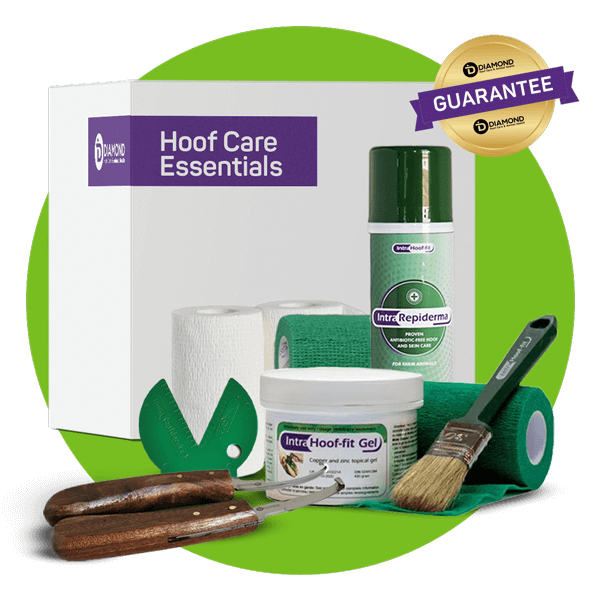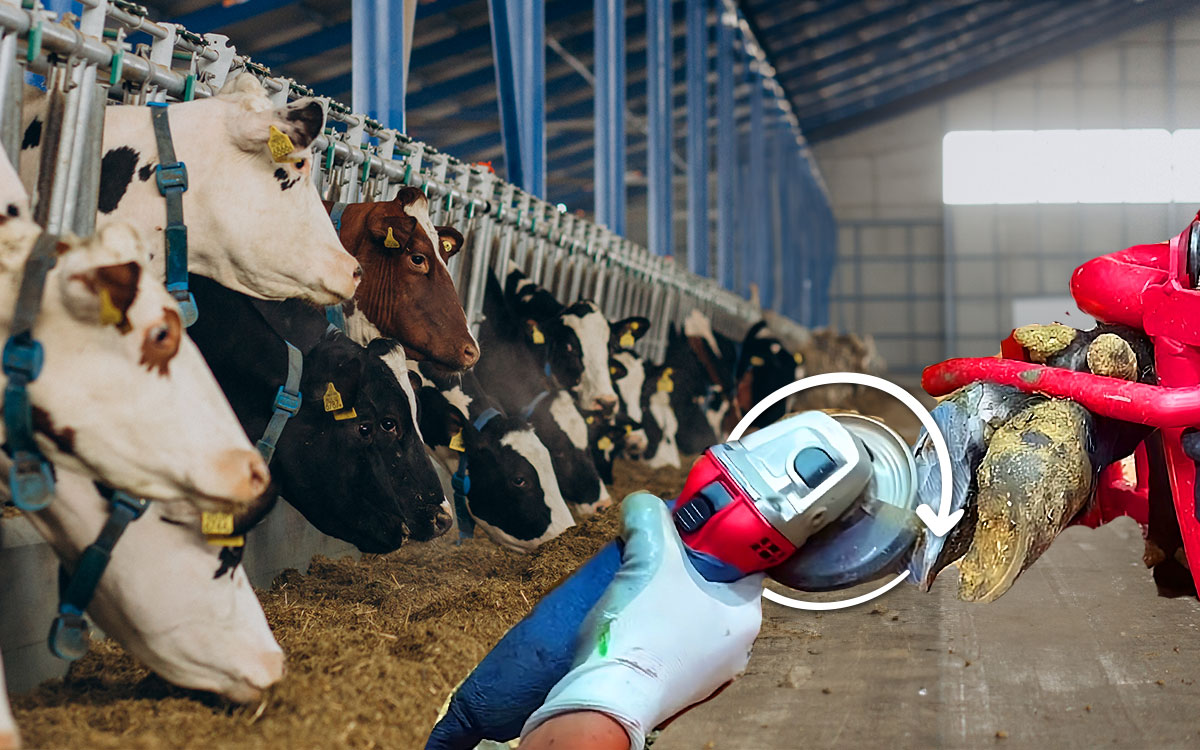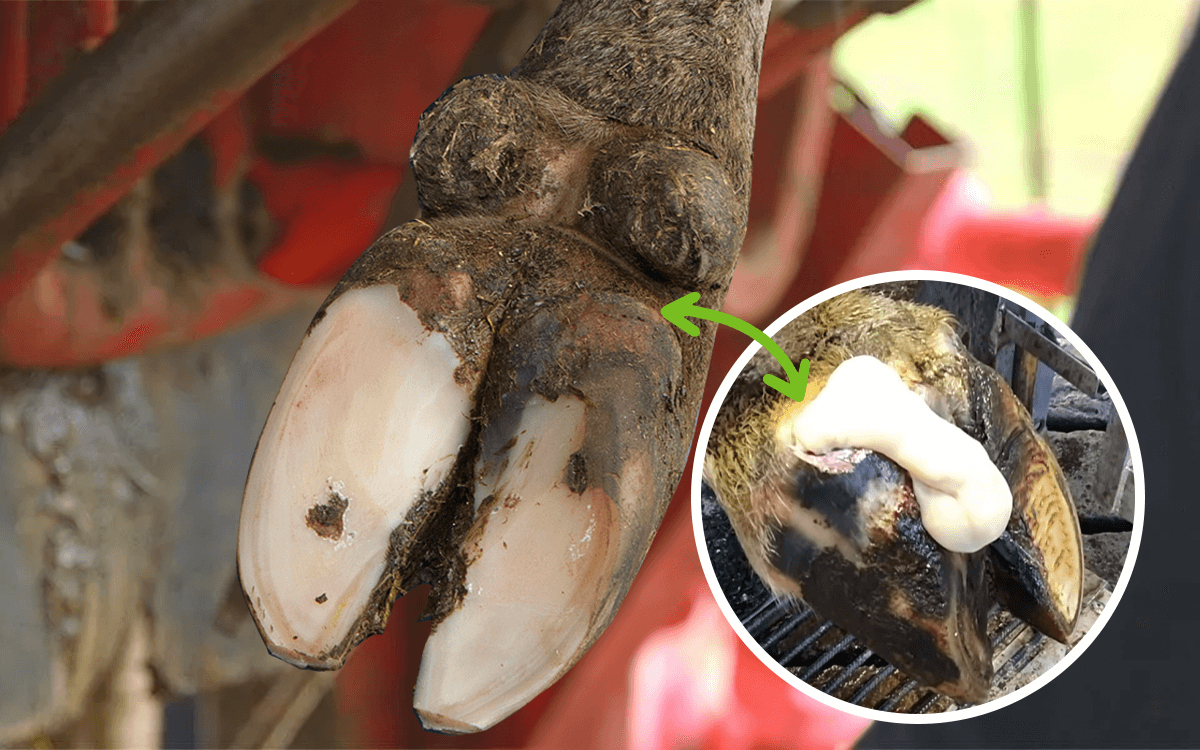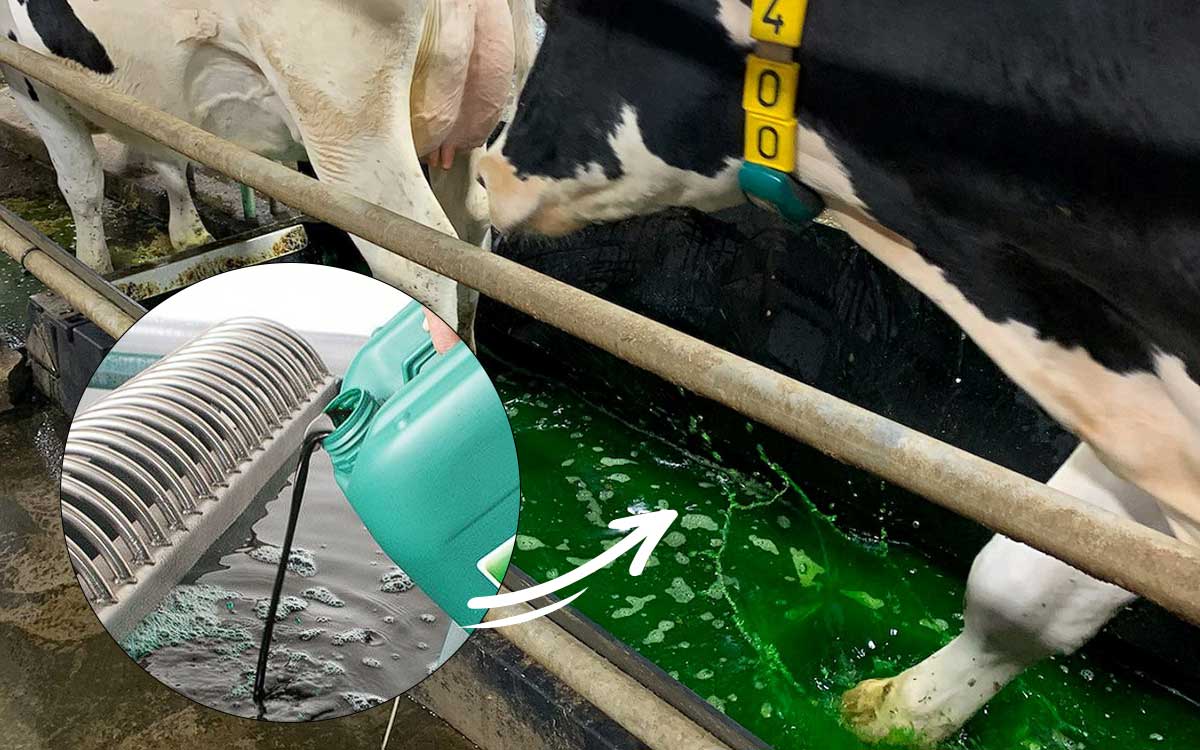Table of Contents
Taking care of the hooves of large animals, such as bovines, is of utmost importance. When it comes to hoof trimming, there are several essential takeaways that every livestock owner should be aware of. Make hoof trimming easy and fun, and you will create a new and enjoyable hobby that keeps your cows happy.
Our complete step-by-step guide on bovine hoof trimming outlines the benefits, necessary tools, and detailed procedures to help ensure the health and well-being of your cattle.
Table of Contents
Advantages of Bovine Hoof Trimming
Proper hoof trimming at the right time is essential for the overall health of cattle. As a hoof trimmer, there are many topics I can cover, and in this article, I will focus on the benefits and steps for achieving successful hoof health in your herd. Healthy hooves equals happy cows. When dealing with a lame cow, treat it as if you would mastitis: on time and with a targeted goal. This reactive approach should be built into your solid prevention protocol, including hoof trimming.
Prevent Lameness
Lameness is an agonizing condition that can significantly reduce the productivity of your cattle, leading to financial losses and a decline in the quality of your herd. Don’t let this debilitating ailment take a toll on your herd’s well-being. Take proactive measures to ensure that your cattle stay healthy and happy. Regular hoof trimming helps prevent lameness by addressing issues such as overgrown hooves, cracks, and infections. You can ensure your cows can move comfortably and avoid unnecessary suffering by providing appropriate hoof care. I have often said to my clients: it pays to trim. Early prevention is the best way of avoiding problems later on.
Improved Hoof Health
Healthy hooves are the foundation of a cow’s mobility. Regular trimming promotes good hoof health by removing excess hoof-horn to balance the weight distribution over the two claws and relieving pressure on areas prone to cause problems. Healthy hooves also minimize the risk of hoof-related diseases and promote overall animal happiness and performance. When cows are comfortable and healthy, they perform better. This is especially true for dairy cows, which must be in top shape to produce milk.
Enhanced Animal Welfare
Animal welfare is a top goal for livestock owners, and bovine hoof trimming directly contributes to it. By regularly paying attention to the hooves of your herd, you are investing in their well-being and ensuring they have a comfortable and pain-free existence. Happy cows make for happy farmers!
Prevention of Secondary Health Issues
Hoof problems can lead to a cascade of secondary health issues in bovines. When hoof health is neglected, cows can suffer from, for example, joint issues, poor fertility, reduced milk production, and weight loss. Regular trimming prevents such problems from arising, helping maintain your livestock’s overall health and productivity.
Long-Term Cost Savings
Although investing in hoof trimming may seem like an additional expense, it is a long-term investment that can save you money. By preventing hoof-related ailments, you can avoid expensive veterinary bills and reduce the likelihood of livestock culling due to lameness. The financial benefits of proactive hoof care are undoubtedly worthwhile. It pays to trim!
Proper hoof trimming benefits the individual cow and has positive implications for the entire herd. For example, when one cow develops lameness caused by an infectious hoof disease, it can quickly spread to others through close contact and shared spaces. Another example is when a cow has an out-of-balance, overgrown claw prone to running a sole ulcer. Maintaining regular hoof trimming practices creates a healthier environment for all your cows, reducing the risk of lameness outbreaks and the need for extensive treatment.
In addition to the physical benefits, bovine hoof trimming also provides an opportunity for close observation and early detection of other health issues. As you carefully trim each hoof, you can assess the overall condition of the cow, checking for signs of infections, injuries, or abnormalities.
The Bovine Hoof Trimming Process
Now that we understand the advantages let’s take a closer look at the process of bovine hoof trimming.
Hoof trimming is an essential aspect of bovine care that contributes to the overall health and well-being of the animal. It not only prevents discomfort and lameness but also plays a crucial role in maintaining proper weight distribution and preventing joint and muscle problems. Regularly trimming the hooves ensures that cows lead a happy and pain-free life.
Tools and Equipment
Safe and effective hoof trimming requires the use of specialized tools and equipment. Before you start, let’s ensure your toolkit is ready. You’ll need:
- Hoof trimming chutes for safety
- Sharp trimming knives
- Hoof nippers and a hoof tester
- Products like Hoof-fit Gel and Repiderma
- Hoof blocks plus adhesive for affixing blocks if necessary
- Gloves for your protection
Familiarizing yourself with the proper use of these tools ensures a safe and efficient trimming session. I have written another article about the hoof care tools we should use to trim a cow.

Hoof Care Starter Kit
Step-by-Step Procedure
When I trim a cow’s hooves or an entire herd, I follow a systematic procedure to ensure optimal results. First, we secure the animal in a suitable hoof trimming chute to be safe and stress-free. I wrote an overview page about North America’s different hoof trimming chutes.
Before starting the trimming process, I observe how a cow walks—watching her stepping tells me a lot about how to trim her. After this, I ensure she is adequately restrained to lift one of her hooves. Removing any dirt, debris, or manure that may have accumulated for better visibility is a good idea. This cleaning will also help you identify underlying issues such as infections or injuries.
If you trim your cows, you should pay close attention to overgrowth, uneven wear, and any signs of infection or disease. Trimming should be done gradually and professionally. It is important to note that each cow may have different hoof characteristics, so the trimmer should adjust the trimming technique accordingly. My 5-Steps to Trim a Cow guide gives you a brief overview of how to trim a cow.
The Dutch trimming method is a useful guideline for trimming. Below are the 5 Steps to trim a rear hoof, as outlined by Professor E. Toussaint Raven:
- Measure and trim the inner claw of the rear foot.
- Match the outer claw of the same foot and balance the heels. Never over-trim in this step.
- Add a model in the sole to relieve pressure on the common sole ulcer site
- Check and treat any lesions – for example, either by lowering the heel of the affected claw or adding a block to the healthy claw.
- Remove all loose horn from the heel area.
In my blog post “How to Use the Intra Claw Check”, I provide detailed instructions for correctly measuring hooves.
After the trimming session is complete, it is essential to rethink and review your current prevention plan and ask yourself the following questions:
- Did I have many infectious hoof problems? If so, should I increase the frequency or product used in a foot bath? Or should I start a weekly spraying habit with Hoof Sol Spray?
- Should we adjust the frequency or timing for future hoof trimming sessions?
- Do I have to follow up with some particular cows? Remove wraps, check a block, etc.
By following this step-by-step procedure and using the appropriate tools and equipment, bovine hoof trimming can be carried out effectively and safely. Regular hoof trimming should be incorporated into the overall hoof health routine to ensure the animals’ long-term health, productivity, and well-being.

Importance of Professional Bovine Hoof Trimming Services
While some livestock owners may choose to trim hooves, there are compelling reasons to seek professional hoof-trimming services. In a Hoof Clips Newsletter, “A Look Back: Hoof Trimming Then and Now”, I shared the challenges of finding a local hoof trimmer.
Expertise and Experience
Professional hoof trimmers have the expertise and experience to handle bovine hoof care effectively. They are well-versed in identifying and addressing specific hoof issues and can provide tailored solutions for your herd. Their expertise ensures your animals receive the best care for their hoof health.
Regular Maintenance Schedules
Scheduling regular visits from a professional hoof trimmer guarantees timely maintenance. These experts can assess the condition of each animal’s hooves and recommend appropriate trimming intervals. By adhering to a maintenance schedule, you can minimize the risk of hoof problems and ensure the ongoing health of your livestock.
Minimizing Stress on Cattle
Hoof trimming can be a stressful experience for cattle. Professional hoof trimmers understand how to minimize stress during the process. They employ techniques to calm the animal, ensuring a safer and more efficient trimming session. By reducing stress, professional services offer a more pleasant experience for livestock and their owners.
Frequently Asked Questions
Let’s address some common questions about bovine hoof trimming.
Does hoof trimming hurt cows?
No, hoof trimming, when done correctly, does not hurt cows. It alleviates the pain that overgrown hooves or hoof-related issues may have caused. Professional trimmers prioritize the animal’s well-being and perform the trimming process with care and expertise.
Are there any professional bovine hoof trimming courses?
Yes, there are professional bovine hoof trimming courses available. These courses provide comprehensive training to individuals interested in learning the art of hoof trimming. By attending these courses, individuals can gain the knowledge and skills to perform hoof trimming efficiently and effectively.
Are you ready to elevate your livestock’s hoof health to the next level? Join the Diamond Hoof Care community and get exclusive access to “Hoof Clips” – your essential source for hoof care insights. Benefit from expert advice, stay updated on the latest trends and discover success stories that will inspire and guide you. Sign up now to receive our Hoof Clips news directly in your inbox, free of charge. Don’t miss out on the knowledge and support that can make a real difference in your dairy hoof health management.

Frequently Asked Questions
Let’s address some common questions about bovine hoof trimming.
Does hoof trimming hurt cows?
No, hoof trimming, when done correctly, does not hurt cows. It alleviates the pain that overgrown hooves or hoof-related issues may have caused. Professional trimmers prioritize the animal’s well-being and perform the trimming process with care and expertise.
Are there any professional bovine hoof trimming courses?
Yes, there are professional bovine hoof trimming courses available. These courses provide comprehensive training to individuals interested in learning the art of hoof trimming. By attending these courses, individuals can gain the knowledge and skills to perform hoof trimming efficiently and effectively.
Are you ready to elevate your livestock’s hoof health to the next level? Join the Diamond Hoof Care community and get exclusive access to “Hoof Clips” – your essential source for hoof care insights. Benefit from expert advice, stay updated on the latest trends and discover success stories that will inspire and guide you. Sign up now to receive our Hoof Clips news directly in your inbox, free of charge. Don’t miss out on the knowledge and support that can make a real difference in your dairy hoof health management.
FAQ about hairy heel warts
Is there a cure for warts on cattle?
The short answer is: Yes. In our trials in Canada and The Netherlands with Hoof-fit Gel, we scored 92% success after only 10 days. This non-antibiotic DIN product requires no withdrawals for meat or milk—an overall win-win.
How can I get rid of cattle warts fast?
Start with individual treatments and automate the future. A treatment protocol that guarantees quick success should include individual trimming and wrapping; within a week to 10 days, you will have gained control—I promise!
Final Thoughts
Digital dermatitis, or hairy heel warts, is a challenging condition that can significantly impact the well-being and productivity of cattle. By understanding the symptoms, causes, treatment options, and prevention strategies, you can effectively manage and control this disease. Implementing proper hygiene practices, ensuring adequate hoof care, and addressing herd health issues are fundamental steps in preventing digital dermatitis.
Remember, a healthy herd is a productive herd, and by actively managing and controlling digital dermatitis, you are not only safeguarding the well-being of your animals but also securing the success of your farming operation.




